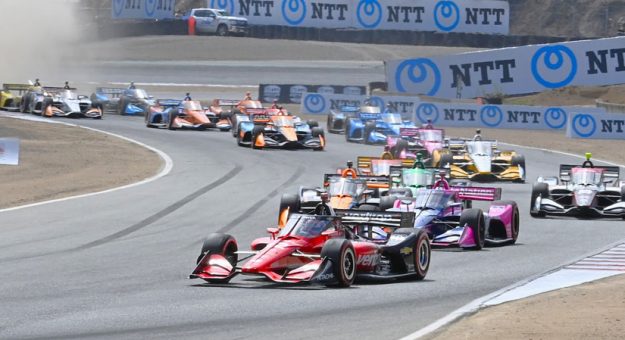CONCORD, N.C. — Looking back 25 years, a lot of things were different.
First, gas was cheaper (average retail price back then was $1.23 a gallon) and a Big Mac cost $2.50.
I’ll pause while you extrapolate those facts and compare them to the present day.
One of the other things that was different was the state of Indy car racing. After a smashing end to the 2022 season that saw Will Power claim the championship in a nail-biter of a finale, it brought to mind a little bit of how we got here.
The story of the Indy car split is well-known and SPEED SPORT (then National Speed Sport News) was in the midst of the entire process at the time. In fact, we’d moved from New Jersey to North Carolina in April 1997 and set up shop near Charlotte Motor Speedway.
The acrimony of those days was palpable. You were either on one side or the other, and there was little if any crossover. You were either pro-CART or pro-IMS. The battle lines were crisp and clear. One side had the money and the stars, the other had the only race that really mattered.
As I remember, it was a strange time to be in the sport. There had never really been a civil war — which is sort of an oxymoron when you think about it — in the sport, outside of maybe a couple attempts to unionize NASCAR.
The two sides — the Indy Racing League and Tony George on one, Roger Penske and Chip Ganassi, et al, on the other — both stuck to their guns and a decade was lost to the squabble. In the meantime, the other big dog in American motorsports, NASCAR, was making hay and the sun was a-shining.
The CART side began to come back to Indianapolis in May 2001, when the controversial “25/8” rule was taken off the books and the healing began … slowly. CART still ran its races, the IRL ran its schedule, but it was diluted. The sport suffered.
It took until 2008 for the two sides to reconcile, such as it was, and the sport has been building ever since. Under the IndyCar brand, it has seen a solid renaissance of late, featuring tight title battles and epic racing. It’s too bad that it had to happen, but in hindsight, the schism was necessary to reset the future.
The reset has been nearly total, as Penske and Ganassi are still involved and still dominating.
Penske, long the driving force behind American racing, now owns Indianapolis Motor Speedway, and has slipped into the leading role at the world’s most famous race track with aplomb. As a son of Indiana, that counts for a lot. The in-fighting and rancor of 25 years ago is mostly gone, with a few vestiges of it here and there.
The Indy 500 is back in its rightful place, with a full house every May, and the cars and stars all show up for it.
Those days, some 25 years ago, were dark and they left painful reminders that are still felt today. Oh, it’s not on the surface, but every so often you’ll feel a tinge of it. Back then, though, you were on one side or the other, and there was hardly any crossover.
As I said, it was necessary: The sport needed a kick in the behind to make it into the next century, and it certainly got one. It is painful that it took nearly 11 years for it to take effect.
But Power — a gritty driver who is also a genuinely nice guy — and his run to the title this year proved one thing: A united Indy Car Series is among the best auto racing series going and the title battle went down to the last laps of the last race of the season.
The echoes are still there, but they’re fading and now we can get on with it minus all the hard words and stubbornness of 1997.
